
For 26 years this large gazebo with high ceilings and open-air spaces has been the home of the most famous storyteller and reciter of retahílas, or traditional rhyming verses, in all of Guanacaste: Marielos Jiménez, known as “La Chola.” And she, in turn, is a living harbor of thousands of stories, old-fashioned words, coal irons, and puffy, handmade tortillas – “because if it doesn’t puff up, it’s not a tortilla.”
“Come here and let me love you, and you come here and let me love you, too, little girl,” Jiménez exclaims as we enter, as if she had known us for years.
María de los Ángeles Jiménez Martínez is a strong, stocky figure with an apron and permanently affixed hat, whom everyone in the village knows as Marielos Jiménez, “La Chola de Bagaces,” because that’s how she signs off when telling her stories. “A chola is a hardworking woman. People say, ‘Look at that chola! My lord!’”
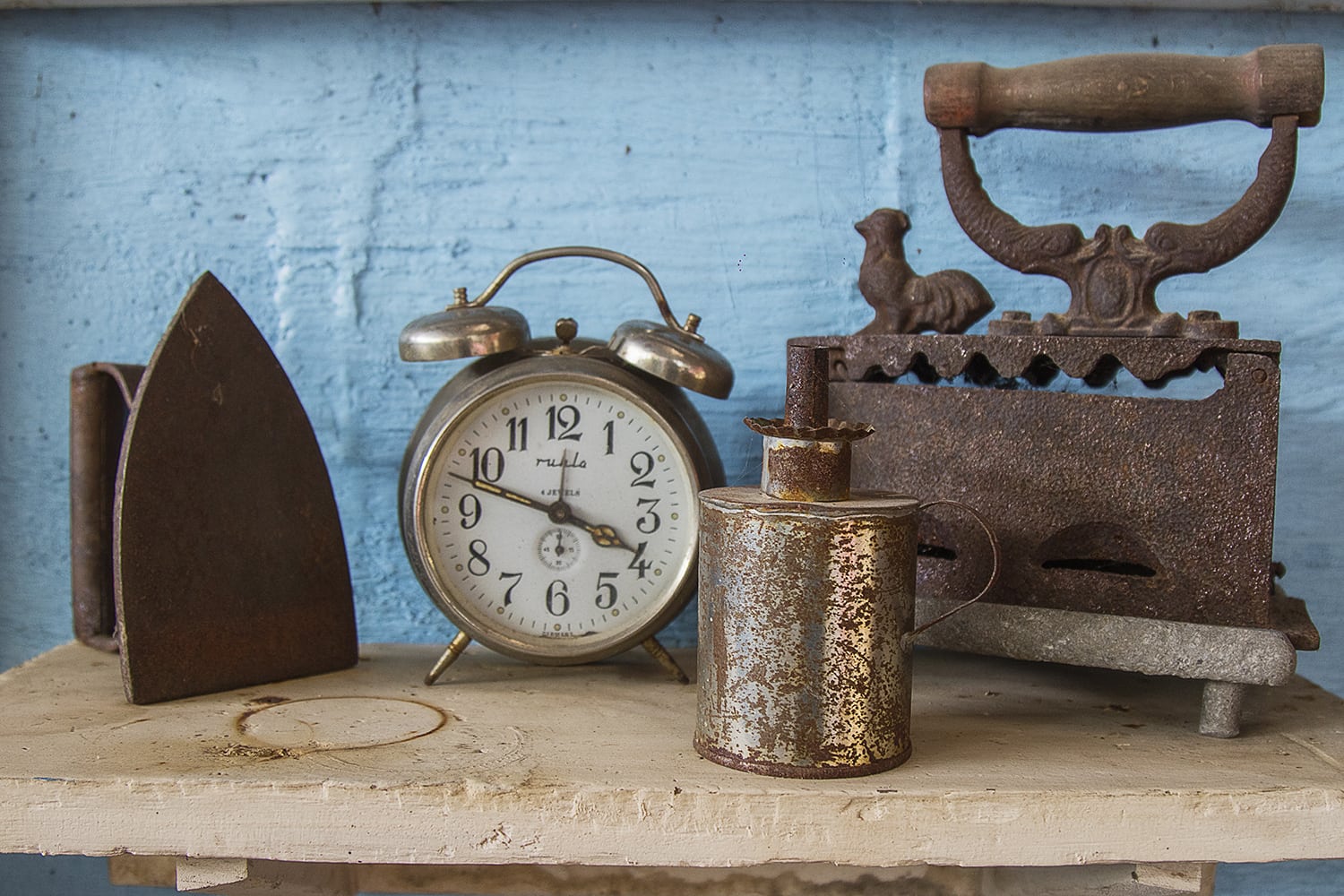
This corner pays tribute to La Chola’s mother.
Las universidades del país ya la han reconocido como folclorista, le han hecho documentales, la llaman para trabajos de historia y antropología, la consideran un bastión en la lucha por traer al presente el pasado guanacasteco. Esta chola, trabajadora de muchos años, es dueña de un acervo cultural que resguarda junto a otros guanacastecos como Max Goldenberg o Guadalupe Urbina.
Doña Marielos es una abuela (ya bisabuela) de 60 años con aires de matrona que, en vez de abrazar, nos amasa, nos envuelve. Es la típica figura que uno querría al lado cuando le rompen el corazón, le da calentura de pollo… o se le aparece la mona.
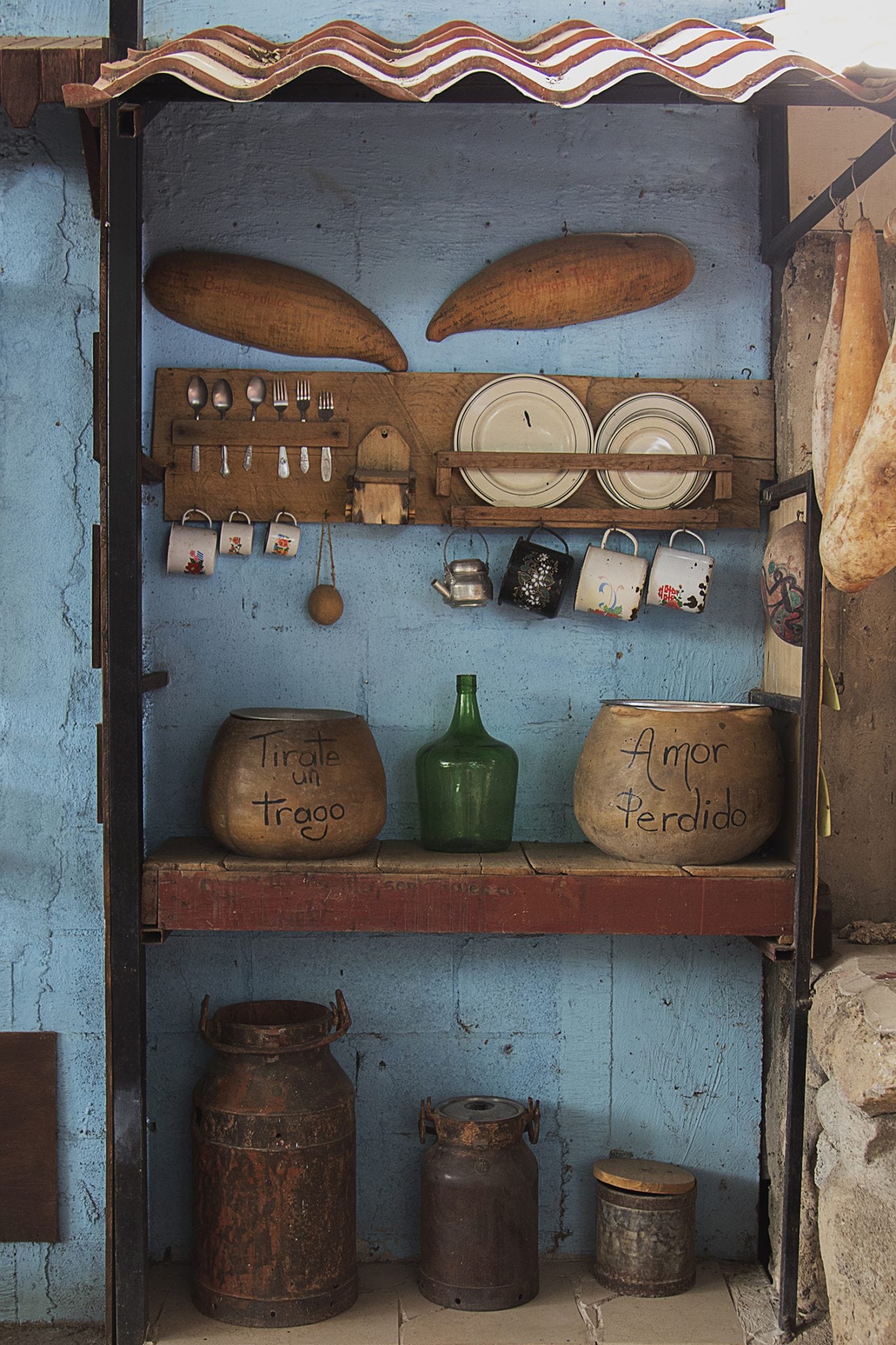
Marielos Jiménez’s home is a living museum with decades-old artifacts. Some of them she has kept from when she was a girl and others were given to her.
According to legend, the monkey woman, or “La Mona,” as she is known here, transforms into a monkey at night and shamelessly runs around scaring people, the storyteller warns us as we sit down to get to know each other. Doña Marielos says she knows who the monkey woman is: “She’s the neighbor who lives behind here,” she says in a hushed voice. The first time she saw La Mona was one night when her family decided to sleep under the stars to enjoy the moon’s light, “which was precious.”
“Oh my precious God, darling! I’m sitting there staring at this son-of-a-gun monkey in a güitite tree. Seeing a monkey isn’t bad. But you know what’s bad? Its eyes – they’re human!” she exclaims while chewing on every syllable as if she were going to swallow them.
The Museum
Hanging from the güitite tree, which no longer has branches, are a dozen silver coffee pots of various sizes. Underneath is a wood stove, a clay oven and a delicate little kitchen named “la contumeriosa,” because that’s exactly what it is: persnickety.
“All of this I did myself,” La Chola proudly proclaims while showing off her art. “What I didn’t do is the mixing, but the rest, the stone, everything, I put there.”
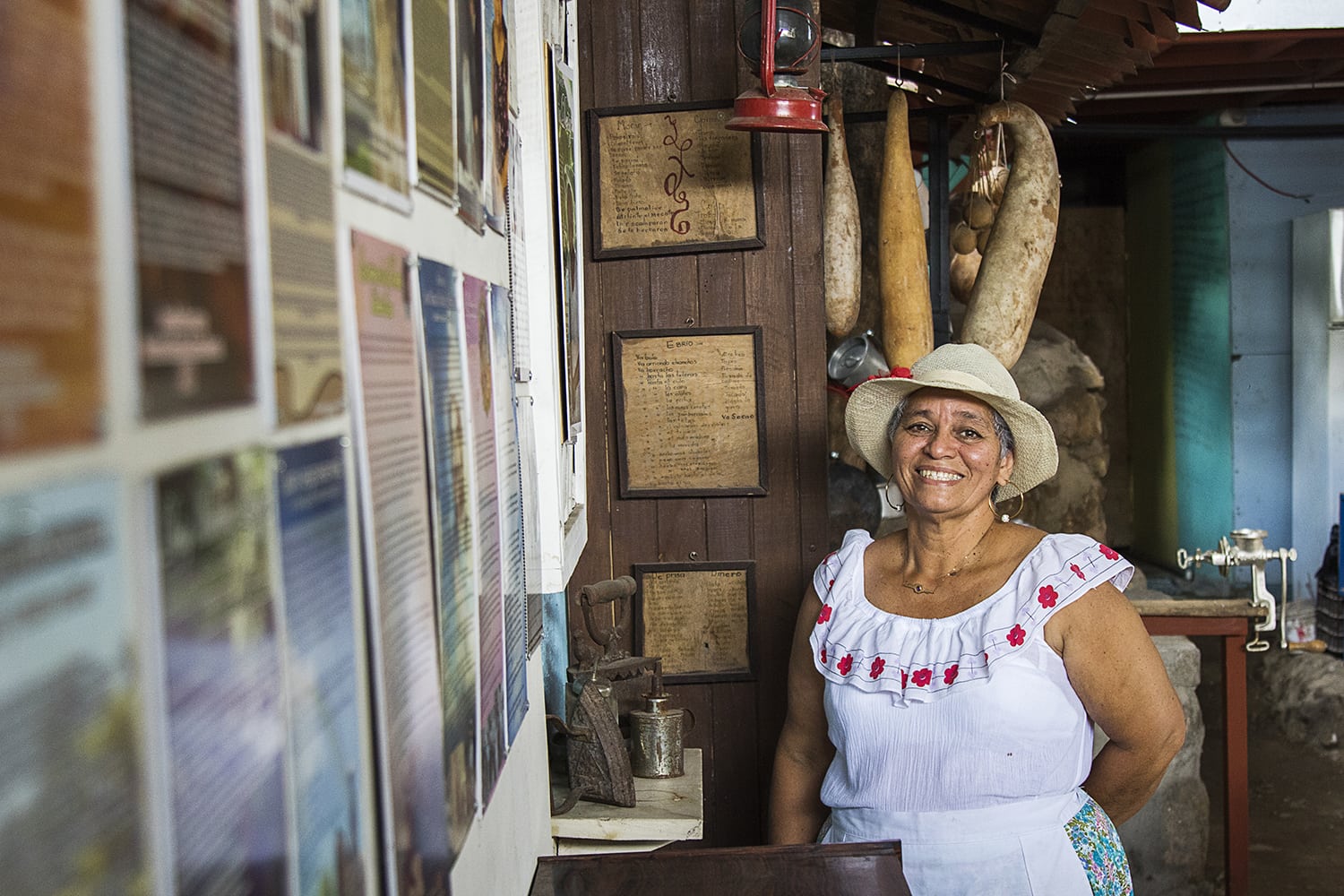
“These days everyone changes the names of everything. No! Why invent something that has already be done, my darling? Better to conserve what we have.”
From that point on, an interminable path begins containing stories hung from the wall, pots with Guanacastecan names to force people to remember them, pre-Columbian figures unearthed from the ground, recipes on pieces of wood here and there.
Carne al vaho (a slow-cooked meat dish with plantain wrapped in a banana leaf), machoaltrote, papaya picadillo, rice with corn, piñonates… all names from the historic Guanacastecan kitchen passed down through the generations, but also easily forgotten.
La Chola, a woman of vast knowledge, has written more than 100 stories of the living and the dead from Bagaces, which she then prints out along with a photo of the person. These are given to the subjects’ families or placed with a flower on their graves. Oblivion does have a cure.
Where Did This Living Legend Come From?
This charming woman, mother of six, grandmother of four and great-grandmother of two, possesses between her gray hairs and her feet a cultural knowledge of Guanacaste that dates to the late 1800s, when her grandfather, or “güelito,” was born. He was a “man of great knowledge, as they used to call grandparents back then. They didn’t call them senior citizens.”
Her güelito, handsome, tall and blond “like a Spaniard,” permeates most of her stories, from when he was a boy living with gnomes (small children with feet that walk backwards) to the talisman that gave him a talking deer to help him hunt.
Her phrases are filled with poetry and determination:
“The party was like it was raining flowers.”
“That hotel is no place for me to rest.”
“San José is not the destination of my travels.”
Güelito was Doña Marielos’ paternal figure par excellence, because her father left to work on a farm and ended up starting another family.
Her mother raised the entire family, washing clothes in the river and ironing with coal. In the center of a long wall to the left is a tribute to her mother, which makes her tear up and eventually cry when she looks at it: an alarm clock, a coal iron, an oil lamp (because she would awake every day at 4 a.m. when it was still dark out) and a poem:
I see two hands passing,
One next to the other,
One with a gourd bowl of water,
The other serene and tranquil,
Waiting for more clothes, blankets and children to bathe.
Marielos Jiménez, La Chola, recites retahílas, tells stories, is a historian (because she enjoys it), and is a folklorist (because “that’s what they call me”). Visitors leave her home feeling as though they had lived centuries in only a couple of hours.


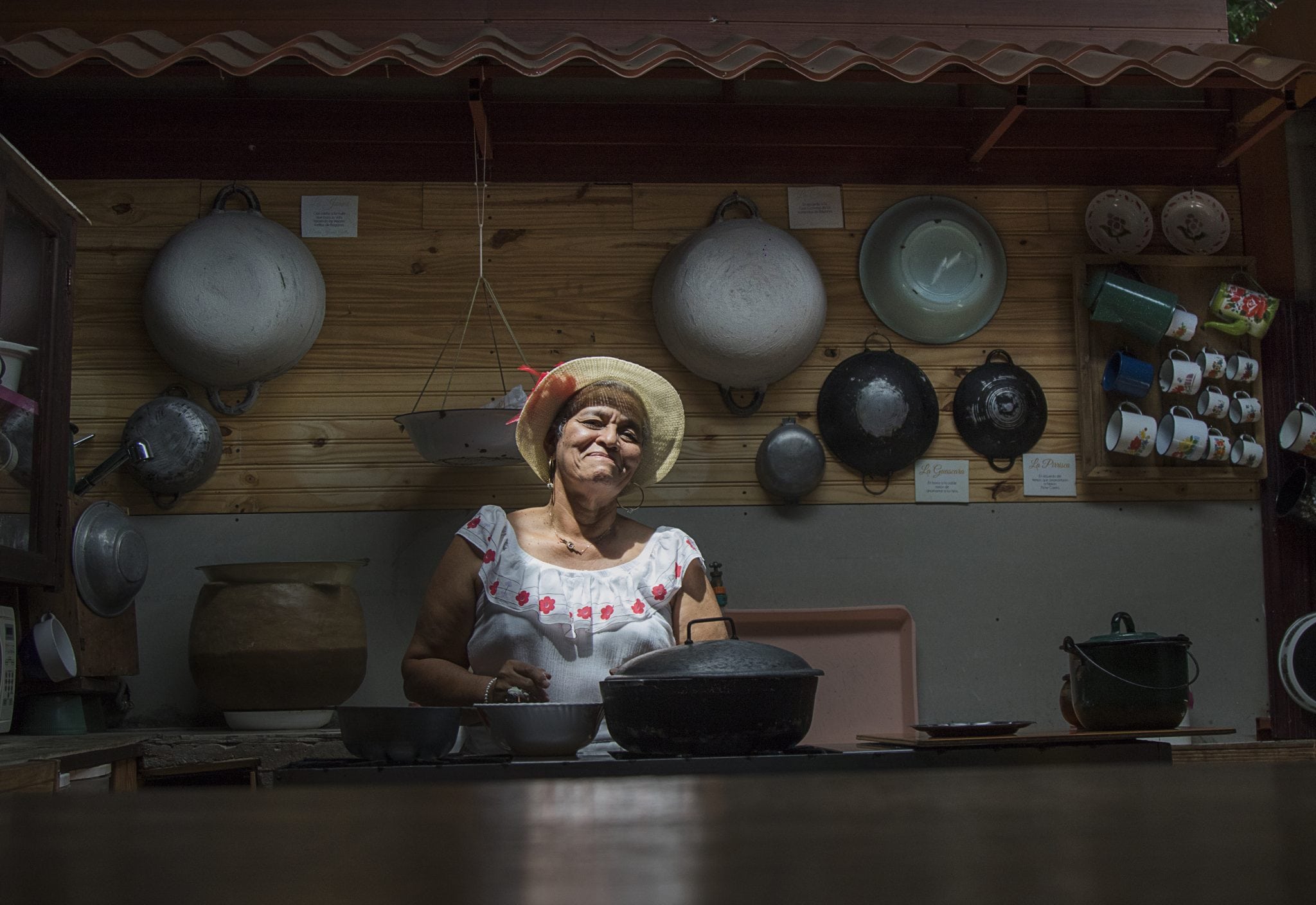
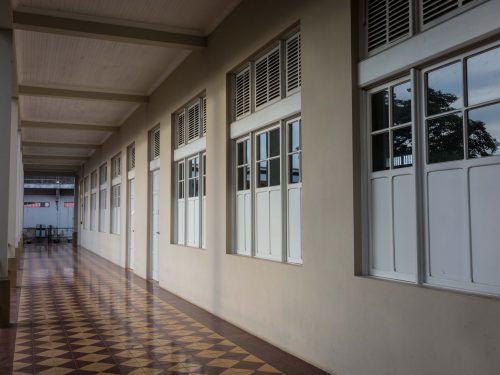
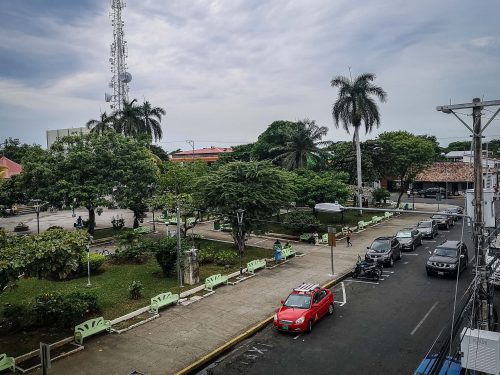


Comments